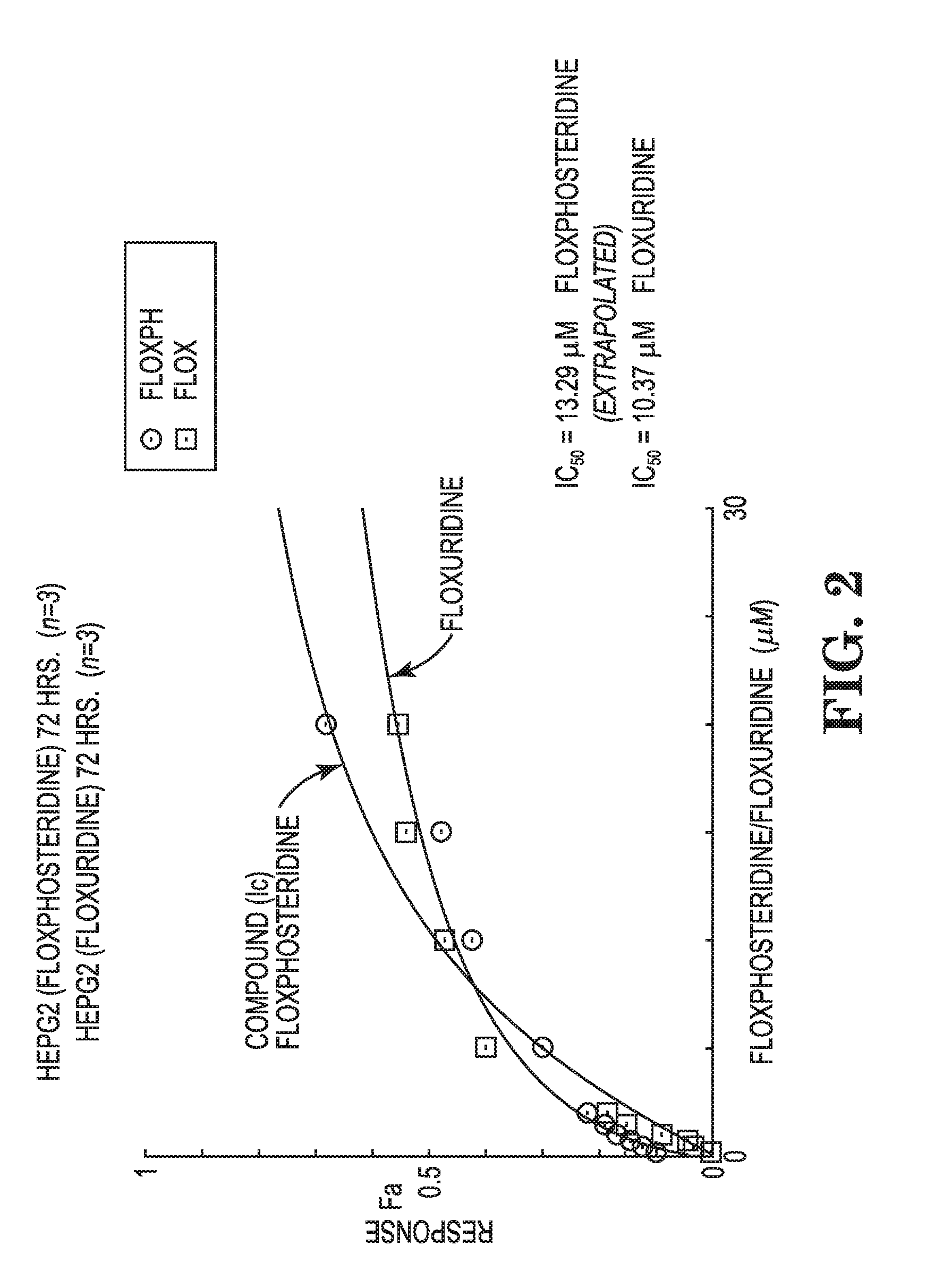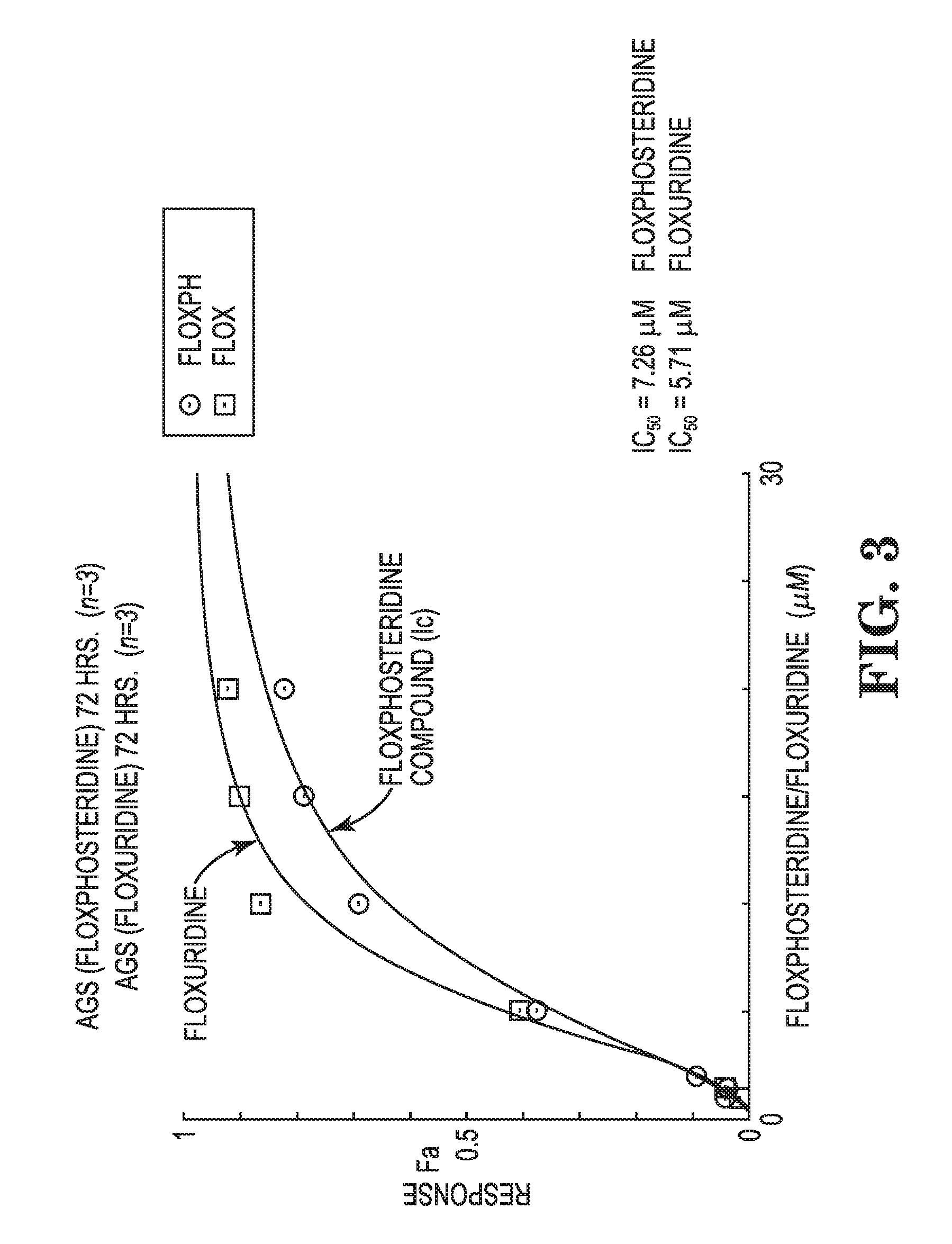Nucleoside phosphoramidates and phosphoramidites
a technology which is applied in the field of nucleoside phosphoramidates and phosphoramidites, can solve the problems of increasing the risk of hcc, poor prognosis, and ineffective treatment, and achieve the effect of reducing the cost of treatment and limiting treatmen
- Summary
- Abstract
- Description
- Claims
- Application Information
AI Technical Summary
Benefits of technology
Problems solved by technology
Method used
Image
Examples
example
Anticancer Activity of Floxphosteridine (Compound Ic) and Floxuridine
[0391]We treated three cancer cell lines with various concentrations of Floxphosteridine (compound Ic) and floxuridine for 72 hours. The structure of floxuridine is shown below:
The SK-HEP-1 and HEPG2 cell lines used in these experiments represent in vitro models for hepatic cancer. The AGS cancer cell line is an in vitro model for gastric cancer.
[0392]In FIG. 1, SK-HEP-1 hepatic cancer cells were treated with various concentrations (0.01-20 μM) of floxphosteridine and floxuridine for 72 hours, and cell viability was evaluated with the MTT assay. The data indicate that both agents significantly inhibited SK-HEP-1 cancer cell viability with increasing treatment concentrations. The IC50 values for floxphosteridine and floxuridine were calculated with Compusyn software to be 31.65 μM and 0.8 μM, respectively.
[0393]In FIG. 2, the two compounds were tested for anticancer activity against HEPG2 hepatic cancer cells. The c...
PUM
| Property | Measurement | Unit |
|---|---|---|
| Frequency | aaaaa | aaaaa |
| Frequency | aaaaa | aaaaa |
| Frequency | aaaaa | aaaaa |
Abstract
Description
Claims
Application Information
 Login to View More
Login to View More - R&D
- Intellectual Property
- Life Sciences
- Materials
- Tech Scout
- Unparalleled Data Quality
- Higher Quality Content
- 60% Fewer Hallucinations
Browse by: Latest US Patents, China's latest patents, Technical Efficacy Thesaurus, Application Domain, Technology Topic, Popular Technical Reports.
© 2025 PatSnap. All rights reserved.Legal|Privacy policy|Modern Slavery Act Transparency Statement|Sitemap|About US| Contact US: help@patsnap.com



